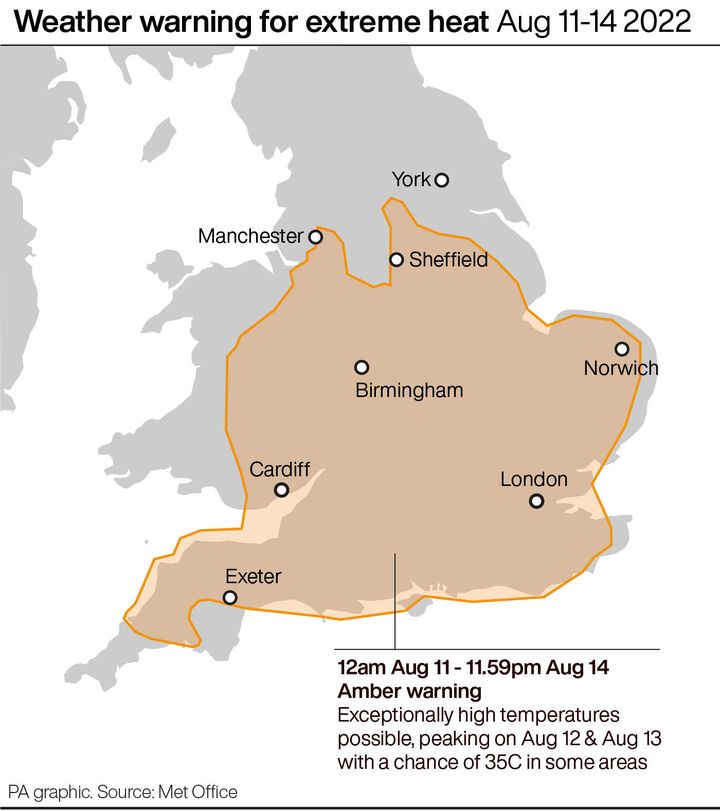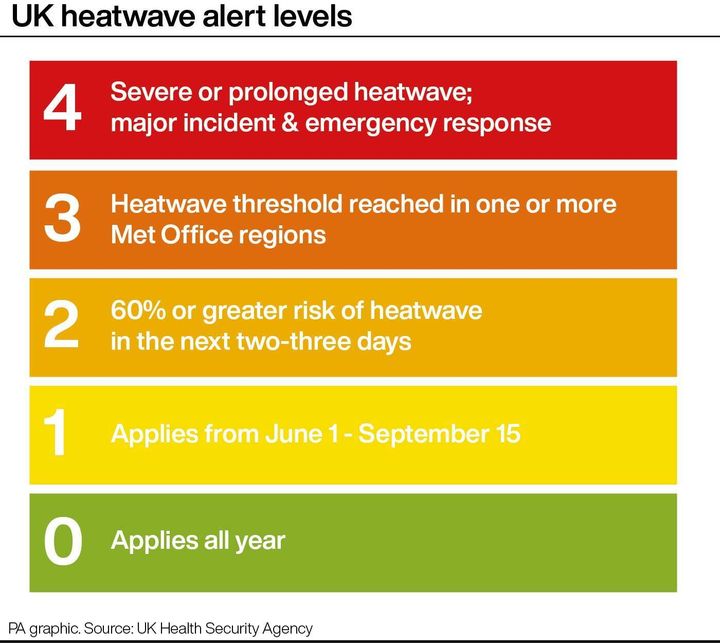
Another heatwave is set to hit England and Wales towards the end of this week, with temperatures potentially climbing up to 35°C.
The four-day heatwave is set to begin on Thursday and stretch into Sunday, and comes less than a month after Britain struggled to cope with the last record-breaking temperatures.

What do the experts know so far?
The upcoming four-day spike in temperatures described as a heatwave, because it means temperature go beyond the usual average for more than three days.
The Met Office has also released an amber extreme heat warning for the weekend onwards, although temperatures are likely to peak on Friday or Saturday.
The West Midlands and the West Country will probably see the highest temperatures, although this could change.
According to the BBC, Met Office meteorologist Tom Morgan said: “It does look like a prolonged period of dry weather and obviously that’s bad news for southern England where some rain would really be useful now.”
The Met Office has also issued its highest available warning for fire severity in the upcoming days. It predicts there will be an “exceptional” risk for southeastern areas of England from Thursday onwards, with the risk spreading outwards as the days pass.
Wildfires are more likely as the environment is so dry, with fire services discouraging any bonfires, barbecues, fireworks or sky lanterns.
The UK Health Security Agency also released a level-three heat-health alert (the second most serious alert) for Tuesday through to Sunday.
Fears over farms continue to grow as well. Without proper irrigation, many crops are likely to fail, as not even grass is growing right now.
Will it be comparable to July’s heatwave?

The first ever red warning was issued in July when temperatures in the UK reached 40.3°C for the first time ever.
Luckily, this week’s extreme weather will not reach the staggering highs seen last month, but it will still pose a risk to vulnerable people. There is a higher risk of sunburn or heat exhaustion, too, and fires are still likely to break out.
It also means heat-sensitive equipment may struggle while transport delays are likely.
It’s still important to stay hydrated, cool and try to stop your home from overheating.
What about water supplies?
England has had its driest July since 1935, while the south-east and central southern areas had its driest month since records started in 1836.
Thames Water is the latest company to announce its plan for a hosepipe ban in the coming weeks for its 15 million customers.
Hosepipe bans are already in place in Hampshire and the Isle of Wight with others soon to follow in Carmarthenshire, Kent, Pembrokeshire and Sussex.
Water supplies across the country have been struggling in recent weeks, with high demand and burst pipes causing extra disruption.
The UK has not had a significant drought since 2018, but the rainfall levels have been low this entire year with river flows below regular depths even before temperatures soared.
Should we expect more like this?
Having two heatwaves within just a few weeks is unusual, but it’s only likely to become more common due to the climate crisis.
The UN’s Intergovernmental Panel on Climate Change believes the UK is living in the hottest period the Earth has experienced for 125,000 years.
Human activity has caused a 1.1°C increase in global temperatures since the industrial era – and this won’t stop unless governments around the world take action to carbon emissions.